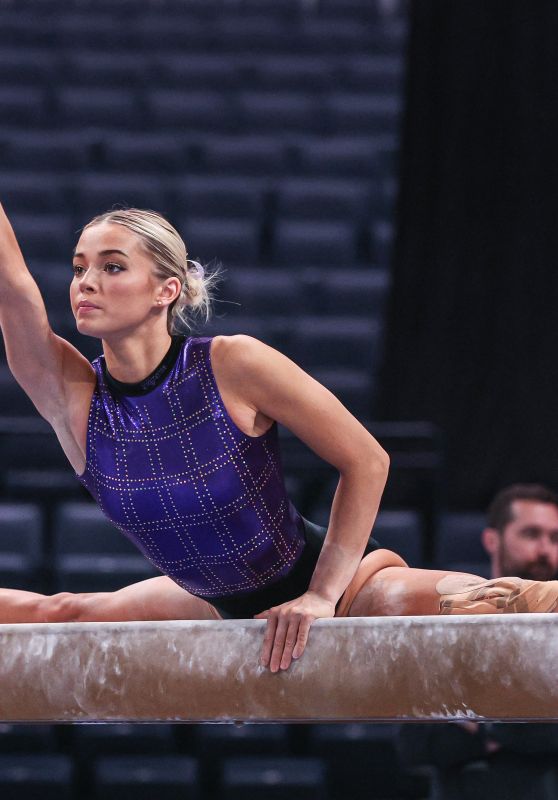[This story contains mild spoilers from Netflix’s American Primeval.]
For Dane DeHaan, his scalping scene in American Primeval “was one of those magic moments” of filming, he tells The Hollywood Reporter. “We got it the first time. We kept going back and watching it.”
The blood gag, a practical makeup effect technique, was so good he was still getting messages about it days later. “For a week after, people kept texting me all these videos and pictures of myself getting scalped. I had to be like, ‘I know that we’re all proud of ourselves, but everyone, please stop,’” he continues, starting to laugh. “It was really messing with me.”
The scene, which takes place in the first episode of the Peter Berg-directed Netflix miniseries about a mass murder during the Westward expansion, is likely to mess with audiences. DeHaan portrays Jacob Pratt, the unwitting victim of an escalating land dispute between Brigham Young (Kim Coates) and his followers from The Church of Jesus Christ of Latter-day Saints, the federal government and the region’s Indigenous communities.
That dispute comes to a bloody head in the first episode’s dramatic reenactment of a real-life mass murder, 1857’s Mountain Meadows Massacre — a deadly attack on a wagon train of settlers hailing from Arkansas and moving through the region now known as southern Utah. The event leaves DeHaan’s fictional young Mormon partially scalped and left for dead. Yet, unlike many scalping victims in the onscreen history of American Westerns, Jacob survives — a less common but not impossible outcome.
“We took a look back at what they did post-scalping in the 1800s, which was real Frankenstein stuff,” Berger explains. “They were sewing people up. And in the scene where they’re sewing Dane’s head up, I wanted that to be really, really raw.”
DeHaan’s character goes on to appear in the series’ remaining five episodes. “It’s a show with a lot of violence and a lot of suffering, and it was a time of a lot of violence and suffering,” he says. “The question I kept having is: why is he going out here? Why is he even choosing to go on day-to-day?”
Jacob’s wife is one major reason, with Abish (Saura Lightfoot-Leon) among those presumed dead or missing when he is found by a group of Mormon militiamen. With his memory of events both hazy from head trauma and intentionally clouded by the nature of the massacre (designed to frame an area tribe for the murders), the battered and bloody man has his head sewn back on before unknowingly setting out to get retribution for his wife’s fate alongside the very men who nearly killed him.
On his journey, Jacob’s rage grows, and so does that seepage leaking from his rotting head. His deteriorating state leads the Mormon men assigned to him to believe their traveling companion is mentally unraveling. But just as the stitches fail to contain the bloody trickle from his scalp, so too do the militia’s manipulations fail to prevent Jacob’s growing realization about the massacre’s true orchestrators.
“He is so idealistic in the beginning with Abish, and then it all ends really horribly. It’s gutting,” makeup department head Howard Berger tells THR. “I wanted to destroy him from the outside so that Dane could then do what he wanted to do from the inside with a lot of humanity, sadness and heartbreak.”

The series generally holds nothing back in terms of portraying the kind of visceral brutality that resulted from the violent campaign of manifest destiny and America’s founding. But the mass murder and Jacob’s scalp are among the show’s most graphic depictions. “That scene in the show is so intense. I’ve never seen a battle in that period that looks like that,” DeHaan says of the massacre sequence. “I couldn’t believe how they made it come to life, and the way [special makeup effects artist] Jamie Kelman and Howard made it come to life for me was almost entirely practical.”
The design work for Jacob’s scalp was the product of Berger’s studio KNB EFX, with the Oscar-winning make-up FX legend and American Primeval makeup department head telling THR that Berg — a decade-long collaborator — let him “run with it” for this scene on their ninth project together. Before getting to set, Berger and his team would try “a whole bunch of different looks in Photoshop, and we finally landed something, this really beautiful silicone prosthetic piece” before DeHaan himself would go through several makeup stages.
“I’ve worked with [Berg] previously and he brought on Jamie Kelman, who had done my old age makeup in Oppenheimer,” says DeHaan. “He’s a real collaborator, and so we took this script and the story, and we tried to map out the different looks and the different levels of my wound and where it’s at. Am I freshly scalped? Am I sewed up?”
DeHaan and Berger note the production began with one of Jacob’s last scenes in episode six, which meant Kelman had to use a bit of guesswork to determine the final state of Jacob’s head wound and track its progress in near-reverse over seven months of filming. Berger explains it was a process similar to the one he and Kelman did while working on Berg’s 2013 film Lone Survivor, with the duo going through the script, identifying every beat where Jacob’s scalp would be visible and, in a spreadsheet, notating the details of the head wound’s decomposition at every point.
“His stage one is the actual scalping that we did, and then there are later stages as he gets worse and decomposes. That was a combination of different prosthetics and different contact lenses. I wanted his eyes to look hemorrhaged,” says Berger. “Then Jamie handled all of Dane’s application and makeup, and really brought it all together — made it magnificent. Those two work together really well because Dane has a keen eye. If continuity was off, Dane would point that out and go, ‘Oh yeah, that’s not where the blood is. It’s more here.’”
“It was a collaboration of me and Jamie and making sure we were as prepared as possible so that it not only looked amazing, but it tracked given the extreme journey that my character goes on,” adds DeHaan. “Working with Pete Berg, it’s like playing jazz. There’s nothing you can count on. Every day is a little different and you have to roll with the punches. And here we are, trying to make makeup that sequentially makes sense with the story, but anything could come out of left field.”
That would prove true for the actual scalping sequence, which was filmed around midway through the production. Initial plans were to add blood digitally to avoid having to redress the set and costuming, but that changed when Kelman came to Berger on behalf of both him and DeHaan. The duo wanted to rig the prosthetic for a blood take, and the makeup FX veteran — who was already keen on taking a more practical route — agreed to a double-layer appliance just in case the blood-less takes didn’t pan out.
That would prove a pivotal move for the production come the day of filming when, after just two takes, Berg expressed he wasn’t getting what he wanted. That’s when Berger revealed his practical blood gag, and despite being pressed for time, the director agreed to do one take. For the third go, the team used the two-piece prosthetic, which had “a piece underneath that had the blood bladder and looked like the top of his skull, and a piece with a full wig that glued down onto Dane that we could cut and pull up,” Berger explains.

To get the blood into the piece, a pump was rigged and as the scalp “cutting” began, Berger smacked “the back of the plunger and blood would just splay out. I did it traditional. It wasn’t big sprayers. I said I can do this with a horse injection syringe.
“I’m wearing makeup that looks like my normal makeup, and then they had a tube that went down my back that they just pumped blood out of,” DeHaan recalls of the process. “The guy that scalped me came behind me, pretended to cut me as he was peeling it up, and there was someone offset basically with a dynamite plunger of blood.”
As the pump ran out of blood, Berger would reload it. The entire time, the makeup artist says, his heart was racing.
“If you’re slicing the top of somebody’s head off, it’s going to gush. There’s a lot of capillaries up there. And you do things that are cinematic, but I’ve done so much the last 41 years, I have a good sense of how much it would be,” he said of managing the amount of blood. “The trick is knowing when to hit the blood. The second the knife went near Dane’s forehead, I started pumping, so when he pulled back, the blood had already exploded out of the top of his head. It’s a real art to figure out your timing.”
It ultimately went so well, “Pete was like, ‘Oh my god, that was fantastic. That’s the take I’m going to use,'” Berger recalls. “Then he’s like, ‘OK, moving on. Let’s look this way. We’re going to climb that hill. (Laughs) That’s how it goes in Pete Berg boot camp.”
***
American Primeval is now streaming all six episodes on Netflix.




















 English (US) ·
English (US) ·